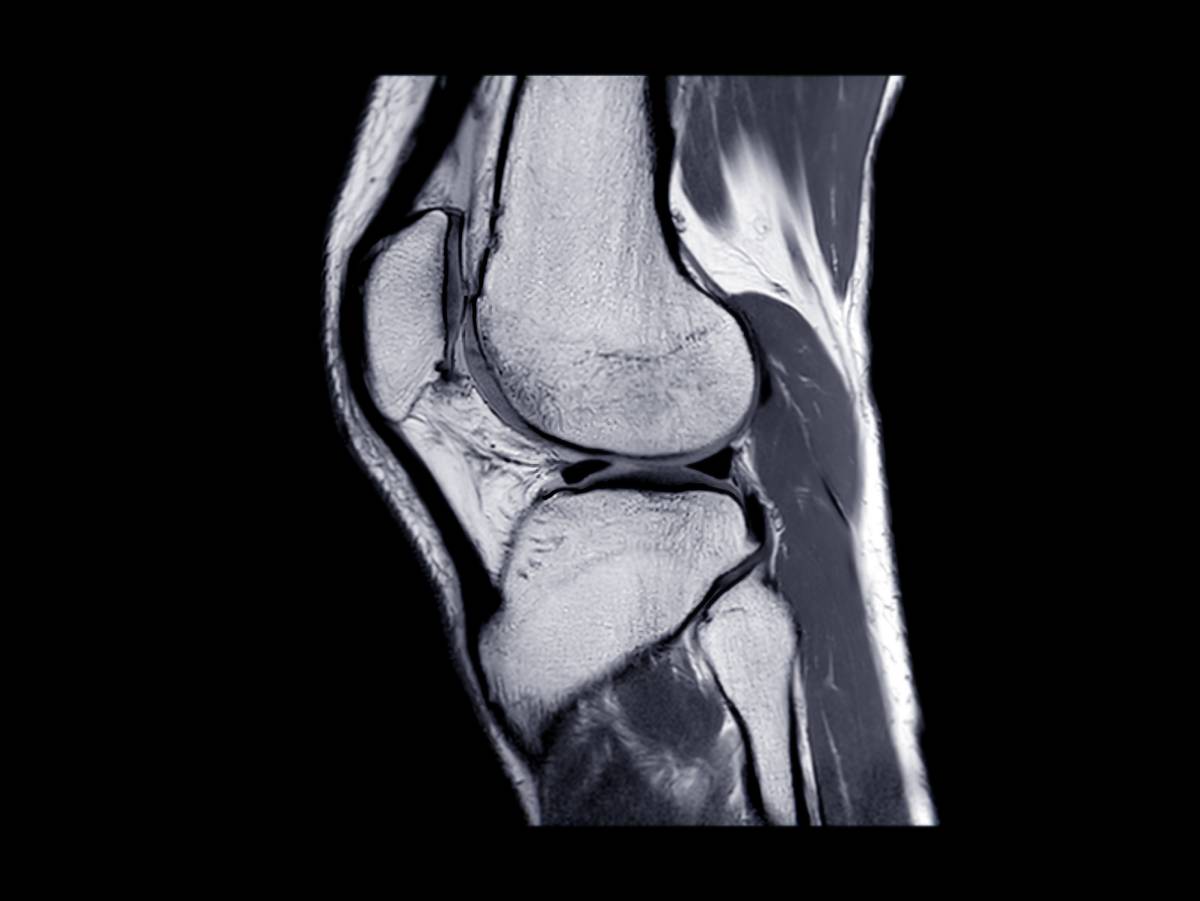One in four adults is estimated to suffer from chronic knee pain in the U.S. alone.1 In addition, the prevalence of knee pain has risen by 65% in the last two decades.2 Many patients with pain have a history of trauma, while older patients often suffer from chronic degeneration or osteoarthritis. Various types of medical imaging have emerged as critical tools in the diagnosis of knee pain, which helps physicians provide appropriate treatment.
The initial assessment of acute knee pain generally includes an X-ray, which is a quick and cost-effective way to identify a number of problems, including fracture, degeneration, and various other issues.3 As Dr. Adelani of Washington University in St. Louis points out, “X-rays are an appropriate screening test for knee pain in older patients, and often the results of an X-ray can tell whether a magnetic resonance imaging (MRI) scan would be even helpful.” 4 Indeed, a research study from 2016 found that many pre-referral MRIs for orthopedic patients over 40 years of age suffering from knee pain do not contribute to clinical decision making. Instead, x-rays of the knee help determine when further specialized imaging is needed.
Next, ultrasonography can be used specifically in the diagnosis of rheumatoid arthritis and to assess the severity of degenerative arthritis lesions. Like X-rays, ultrasonography represents a viable alternative to MRI scans when these are either too costly, unavailable, or contraindicated.
Computed tomography (CT), meanwhile, is the medical imaging modality of choice to provide a detailed, 3D view of bones and other dense tissue. On a CT scan, medical practitioners specifically look for signs of joint narrowing, cartilage abnormalities, swelling, and bony lumps.
Finally, MRIs are also critical in certain clinical contexts for evaluating knee pain. On an MRI scan, practitioners look for abnormal morphology of the knee or ligament oddities, among others.5 It can provide information on a wide range of tissue types. However, research has warned against the overly zealous use of MRI imaging in the diagnosis of knee pain. A systematic review of prospective cohort studies comparing MRI scans and clinical examination to diagnose meniscus tears found that a careful assessment by an experienced examiner can identify patients with surgically treatable meniscus lesions with equal or better reliability than an MRI scan alone. While MRIs are useful, they are most beneficial when a clinician requires further information prior to reaching a diagnosis.6
The choice of imaging modality for diagnosing knee pain depends on the findings from the clinical examination and the strengths and limitations of each test. Medical imaging type should be selected according to the presentation of knee pain and tailored to clinically specific contexts.
In conclusion, evaluation of patients with knee pain should be based on a thorough history and physical examination that may be followed by imaging, rather than, automatically, advanced medical imaging techniques. In the meantime, further research is required to optimize for the best medical imaging technologies in the diagnosis of knee pain.
References
1. One In Four Adults Suffers From Chronic Knee Pain. | ACL Administration for Community Living. Available at: https://acl.gov/news-and-events/news/one-four-adults-suffers-chronic-knee-pain. (Accessed: 29th August 2022)
2. Bunt, C. W., Jonas, C. E. & Chang, J. G. Knee Pain in Adults and Adolescents: The Initial Evaluation. Am. Fam. Physician 98, 576–585 (2018).
3. Koplas, M., Schils, J. & Sundaram, M. The painful knee: Choosing the right imaging test. Cleve. Clin. J. Med. (2008). doi:10.3949/ccjm.75.5.377
4. X-ray may be best screening tool for diagnosing knee pain – Harvard Health. Available at: https://www.health.harvard.edu/pain/x-ray-may-be-best-screening-tool-for-diagnosing-knee-pain. (Accessed: 29th August 2022)
5. Diagnostic Imaging of the Knee for Physical Therapists – Physiopedia. Available at: https://www.physio-pedia.com/Diagnostic_Imaging_of_the_Knee_for_Physical_Therapists. (Accessed: 29th August 2022)
6. Ryzewicz, M., Peterson, B., Siparsky, P. N. & Bartz, R. L. The diagnosis of meniscus tears: The role of MRI and clinical examination. in Clinical Orthopaedics and Related Research (2007). doi:10.1097/BLO.0b013e31802fb9f3
